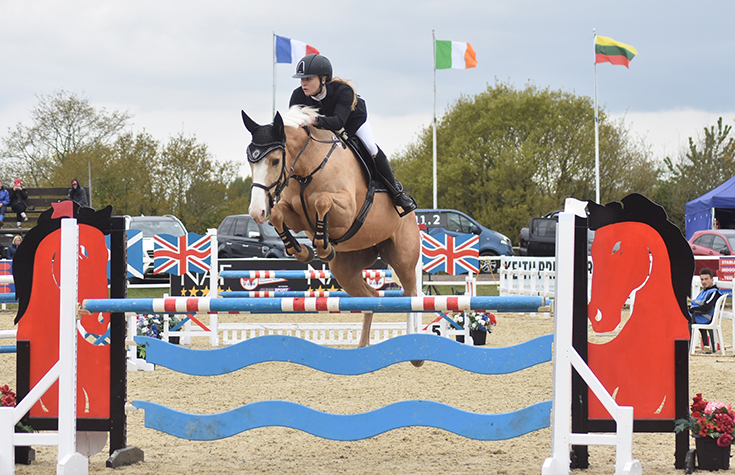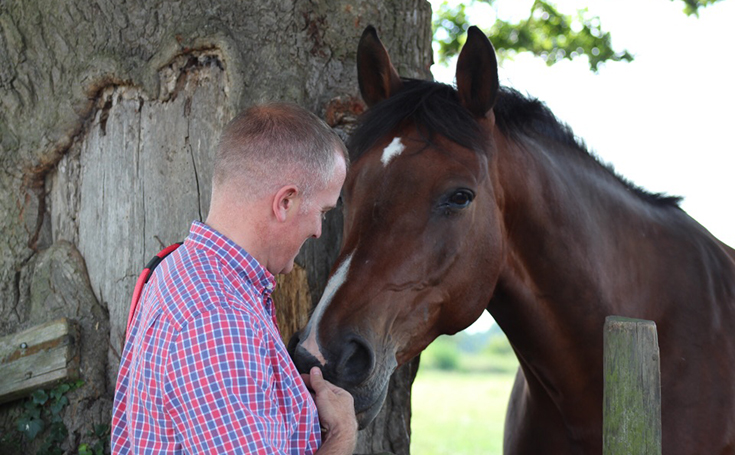The five things a horse can teach you about crisis management
Two years ago, despite a life-long allergy and a sworn aversion to getting even remotely close to an animal of such size and power, my curiosity got the better of me and I sat on a horse for the very first time, writes Andy Marshall, who is a Member of CRJ’s Editorial Advisory Panel.
Since then, I’ve been well and truly hooked. Call it a mid-life crisis (it could be worse – fast cars don’t interest me), sheer madness or risk management hypocrisy of the highest order, if you like. I prefer to echo Sir Winston Churchill’s famous maxim: “No hour of life is wasted that is spent in the saddle.”
Very early on in my introduction to the unforgiving discipline of showjumping, it struck me how many parallels there are between horse-riding and the leadership and management of crises. So the fact that they can’t talk, let alone whisper, aside, what are the top five things that a horse can teach us about crisis management?
1. Teamwork
Anyone who has heard me speak about resilience will know my view that people are the most important ingredient in resolving any crisis. Knowing people, their strengths, their knowledge, capabilities and experience and being able to combine all this in a team setting (often with little or no warning) is a core skill for any crisis manager.
In the equine world, the same principle applies. First and foremost, every stable is a very diverse environment, with a kaleidoscope of characters – from owners to managers, riders to instructors – which forms a virtual team of advice, support, experience and guidance. However, when you add a horse to this equation, the team ethic is much more intense and personal. When you’re on a horse it’s simply about you and a rather large and powerful animal and this is not the time to be getting to know it.
All horses are different, very different, and it takes a significant and constant investment in time and effort to get to know it, what it can and can’t do, how it behaves and how it responds. The dividend is simple: building a bond of trust, a sense of confidence that when you ask for something to be done, the chances are it will be. Horses, like people, are complex. As prey animals, they are also very sensitive: watch a horse in the field in summer and it really can sense a fly landing on it.

Riding is as much a mental as a physical challenge; you ride with your mind. This mirrors at least the very early stages of any crisis, in situations where information comes at speed from multiple sources and places the leader in a position where critical decisions cannot be delayed without significant consequences
2. Leadership
I often hear people say that Crisis Management is just day-to-day management with a different name; when I first rode a horse, I quickly dispelled my own perception that all I had to do was climb aboard and steer with the reins. In both cases, a specific and unique form of leadership is required to make things really work, above all to take charge, to provide a sense of purpose and direction.
For a horse, this is about constant communication, without which it will slow down, stop, or simply do its own thing. Communication with a horse comes in many forms if you want to get even remotely close to getting it to do what you want it to: your voice, your legs, your seat, your hands, even the direction that you’re looking, can influence what the horse does and where it goes. Any crisis manager deals with a very similar challenge between responding to the immediate task, unifying a team to deal with this, communicating clearly what needs to be done, re-visiting this loop as the situation develops and, ultimately, changes. The horse rider and the crisis manager are the pilots, not the passengers; they cannot afford to be led by events and circumstances.
3. Delivery under pressure
There is simply so much to think about, to check, refine and communicate when riding a horse in a straight line; this is magnified considerably with the additional complexity of jumping even one or two fences. This generates its own pressure of information processing, prioritisation and decision-making, making it difficult sometimes to remember even basic requirements such as which way to turn after a jump or in which sequence to jump a course of fences.
Riding is as much a mental as a physical challenge; you ride with your mind. This mirrors at least the very early stages of any crisis, in situations where information comes at speed from multiple sources and places the leader in a position where critical decisions cannot be delayed without significant consequences.
4. Plan ahead – focus on the now
All good crisis response requires some form of plan that is clear in its aim, but flexible enough to deal with what might be just around the corner. Show jumping is no different. If you attend any organised show, you’ll notice that the riders first gather intelligence on the course they’re about to jump by physically walking it. This not only provides the sequence of fences, but also a chance to plan how they will approach them and how many strides the horse will need to take in order to jump each one correctly.
What you’ll also notice, once again, is teamwork coming into play. During the actual course, the rider’s main role is to prepare the horse for jumping, to get it straight and in a steady rhythm to jump. It’s the horse itself that does the jumping; it deals with the ‘now’ while the rider should already be looking ahead to the next challenge, the next fence.
5. Prepare for the unexpected – tolerate setbacks
If you don’t want to fall off, don’t ride a horse because this will inevitably happen at some point. There are many reasons for this, such as an unbalanced rider, a failure to communicate timely instructions to the horse (at which point it will make a decision for you), a poorly judged jump or a sudden noise that ‘spooks’ the horse. Eliminating falling off is practically impossible. Trying to reduce the likelihood of it happening by being aware of emerging risks, planning ahead and being ready to control a fall if it happens are all contingencies in the rider’s inventory. Ultimately the rider has to be prepared to get straight back on after a fall and learn why the fall happened in the first place; falling is not failure.
The crisis manager will understand this. Whatever situation he or she is facing, be it a fire, a flood, an earthquake or a cyber-attack, the unexpected should be expected and setbacks are inevitable, no matter how effective any plans or exercises might have been in the past.
For me, horse riding is a developing passion that challenges me physically and mentally. After only two years of riding, I am more than comfortable with being described as a novice, as there is simply so much to learn. However, when I think about my journey so far, I am struck by how it reaffirms the fundamental concepts of effective crisis management: teamwork, leadership, preparation, planning and managing through adversity.

Andy (pictured above) is taught by showjumper Holly Hammond at Landown Equestrian in Derby, UK